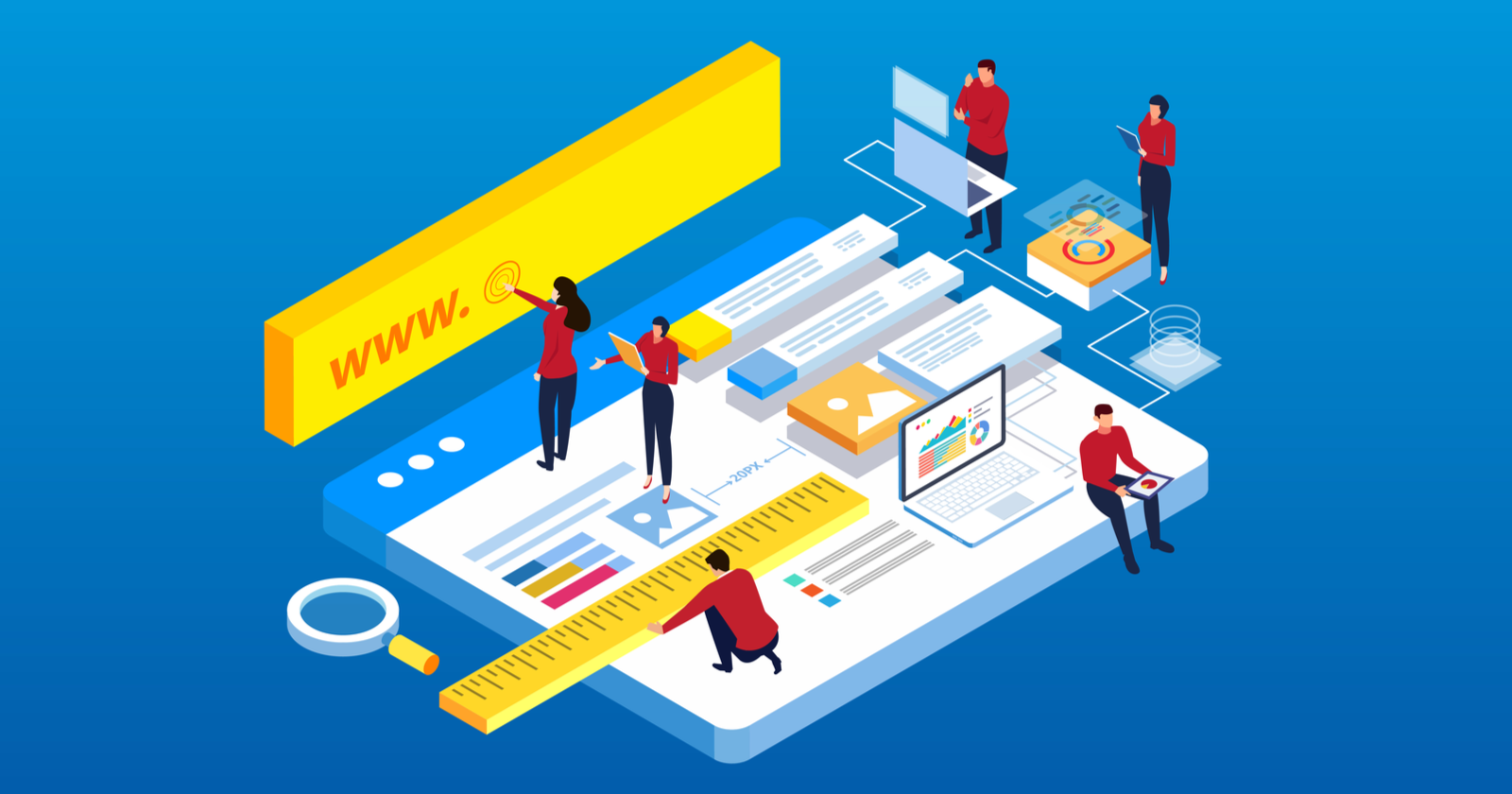Inclusive web design with SEO creates new opportunities for digital marketers and web designers seeking a competitive edge.
Website conversions depend on how well webpages assist people with decision making starting from search queries.
Your role as an SEO is making webpages appear in search engine results at the precise moment for the exact people requesting them.
Advanced online marketing considers the webpage user experience to stick the landing, which takes them into the realm of web design.
The fun is figuring out who those people are so you can target them in search engines and web design decisions.
Most of the time businesses have a fairly good idea of who they are trying to sell products to and who might benefit from their services.
- What are the pieces we may be missing?
- Why is there a spike in website ADA accessibility lawsuits?
- Why study neuroscience and human behavior, behavioral economics and how people sort, search, and filter information?
- How can we apply hundreds of research studies to web design and marketing?
The People Layer of Search Engine Marketing
If you are an SEO professional, your primary directive is to make webpages rank high in search engines for specific search terms.
This is not always an easy task if the webpages are not designed to the proper W3C standards or maintained properly, creating performance issues that search engines notice.
What happens when a person clicks into well-ranked webpages?
Holistic UX and SEO is the practice of optimizing the whole user experience rather than treating some of its parts.
It has been around for nearly 20 years but not applied universally and inclusive design was even less heard of.
The holistic approach includes:
- Website accessibility.
- Information architecture.
- Human behavior.
- Social media marketing.
- Persuasive web design.
- Content writing.
The parts that people can either see, listen to or interact with using a computer, mobile or assistive device contain opportunities tucked inside for search engine marketers to explore.
What’s simmering behind understanding people as users, in addition to search engine bots, are page performance, browsers, operating systems, machine learning, and lots and lots of code of varying flavors.
This exploratory road has no end – which is why SEO will never die.
Digital marketers who play with conversion design and persuasive architecture wrestle it all into a small cell phone device experience.
And then, if you want to be hip, you look for the people you forgot to target in your marketing strategies, such as those with disabilities or minor impairments that make searching or interaction with websites difficult without some assistance or assistive software or device.
An Accessible Target Market
I know what you’re thinking. An SEO professional only needs to be concerned with getting pages ranked so that their clients generate revenue.
What if you are not targeting everyone who is looking for your client’s website?
People use computers in ways you may not have considered before. Not only that, everyone wants equal access to websites and tasks.
For example, the ability to download a coupon should be the same for everyone. The experience of ordering pizza or having a shopping order placed online for home delivery should be available to everyone.
A blind person wanting to book a service for a sighted friend should be able to do that with a screen reader without any barriers.
An anxious person researching natural remedies requires a user experience that is calming and orderly.
Technology Creates Inclusiveness
Years of researching how people use computers, search for information and conduct online activities led to exciting advances in machine learning.
Google’s massive algorithm advance to BERT is one example. So are voice-activated house lights, transcribing podcasts, and adding closed captions to videos.
We now know that font selections, color choices, when to use color, how to instruct cell phones to render pages, how to structure content on webpages for improved comprehension, and where to put links and calls to action are all factors to consider when designing webpages that will respond successfully to an accurate search query result.
- Who needs us to care about these things?
- Are they included in your business requirements?
- Are your developers trained in how people with low vision or no computer mouse navigate webpages?
- Do people ask questions the same way or do they choose words with different meanings based on their culture?
Remember, our job is to help people make decisions, whether this begins in a search engine or once they arrive on a webpage.
We are unable to do either without truly understanding people and their online behavior habits.
Unfortunately, companies forget many people.
This is one of the reasons for ADA lawsuits but truly isn’t a new revelation.
Traditionally businesses spend years testing and adapting to what they think their customers want.
Inclusive design means that websites work for everyone.
Aristotle, the Blind Monster
What do these Sesame Street characters have in common?
- Granny Bird
- Forgetful Jones
- Buster the Horse
- Aristotle
- Honkers
- Dingers
- Simon Soundman
- Slimey the Worm
Each had a special need, disability, or impairment of some type.
They are not popular or as memorable as Bert, Ernie, and Prairie Dawn.
Aristotle was a blind monster character created by Sesame Street to increase awareness about the inclusiveness of people with disabilities. Slimey the Worm does not speak.
Buster the Horse helped Forgetful Jones, the cowboy who always forgot things. The Honkers only communicated by honking, rather than words.
If you study Sesame Street puppet characters, one of the interesting discoveries is that many of them had a friend who helped them with something such as battling a fear, trying to remember something, or communicating with others.
In this subtle way, inclusion is taught.
Inclusive Design Embraces a Wider Target Market
Inclusive means that everyone gets a chance to be included, regardless of whether or not they have a disability, or a minor impairment that makes it difficult to do what others can do.
When a company decides to build a website and advertise it after it launches, they absolutely must hire or train staff in inclusive design.
The typical practice is for web designers and SEO professionals to create user personas and mental models to help their projects stay focused on who the intended target user is.
Preferably these user personas are based on real people and tested with them in their natural environments, using their specific assistive technology.
The benefits of a unified, holistic, inclusive approach consisting of SEO, usability, accessibility, information architecture, and readable content are limitless.
Steps to Inclusive Design
A website that refuses to function for everyone becomes an easy target for social media shout-outs, bad reviews for the brand, and an ADA website lawsuit.
Not every company agrees to invest in website accessibility testing or training for their developers, which sets them up with a disadvantage both from a potential legal situation to a branding one. A company that ignores the needs of users does so at its own risk.
The prime directive, which is to help website visitors make good decisions while on your website, crumbles when support for them is removed.
- Could they read your webpages on their mobile device?
- What about mobile devices with accessibility settings turned on?
- Were they able to understand what to do and where to go on your website while in an anxious state?
- Could they see and understand your content?
- Were your visitors able to use forms on any computer device, with or without a mouse pointer?
If you are doing competitive research, check other brands to see if there are comments from people who can’t use the website at all.
The following are some suggestions for inclusive web design for SEO pros:
- Avoid forcing visitors to call for customer service as the only method for contact. Provide alternatives, such as an accessible form or email contact.
- Never make a phone call the only way to make contact if someone has a problem using your website. This requires them to disclose their disability, which is demeaning, and there may not be immediate help during off-hours. If your PDF forms are not accessible, it is discrimination to “make them call us and we can put it in the mail for them.”
- When optimizing documents such as PDF, PowerPoint, and Word documents, they must also be accessible. Adobe has an accessibility checker that walks you through errors and aids in remediation. An alternative to these documents, such as an HTML version, helps meet the WCAG2.1 standard.
- Revisit the source code. Generic <div>, <span>, and <p> elements instead of semantic markup present issues for screen readers.
- Revisit widgets and plugins to make sure they make sense to screen reader users. They must properly expose information about the names, roles, and values of components in accordance with ARIA techniques.
- Do not change the wording to Contact Us, About Us, and similar pages. Many screen reader users search the page for specific keywords or phrases to get to those pages quickly. Changing the wording to those pages makes it impossible for them to locate them.
- Mind your headings. Start the main content of a webpage with a level 1 heading (<h1>), with no other headings before it. The sub-sections of the page should each be level 2 headings (<h2>) and sub-sections within them marked as level 3 (<h3>). Yes, there are exceptions. This is the recommended guideline.
- Break up large amounts of content with sub-headings, bullet points, illustrative images (with alt attributes), shorter sentences and smaller paragraphs. Avoid distractions if you wish to help people remember what they read or because their ADHD or dyslexia responses just shot up to DEFCON 1 warnings.
- For news or blog articles, include a simplified summary of the important points at the beginning of the story.
- A person’s sensory abilities should not prevent or hinder receiving information. An easy example are hashtags. For phrases, capitalize the first letter of each word. Example: #BestDayEver
Inclusive design opens up a world of possibilities to reach an even greater target market. It goes beyond basic usability and persuasive design tactics.
For developers, adding ARIA and making accessible JavaScript and mobile applications is a new playground. There are not enough accessibility QA trained people to meet the demand.
Avoiding an accessibility ADA lawsuit is driving many companies to seek accessibility specialists. Many SEO consultants and agencies are adding additional services to include inclusive design and accessibility.
This is not just to prevent the threat of a lawsuit but because their clients are investing in their branding and meeting today’s highly competitive marketing challenges.
SEO and inclusive design provide great opportunities for you.
More Resources:





